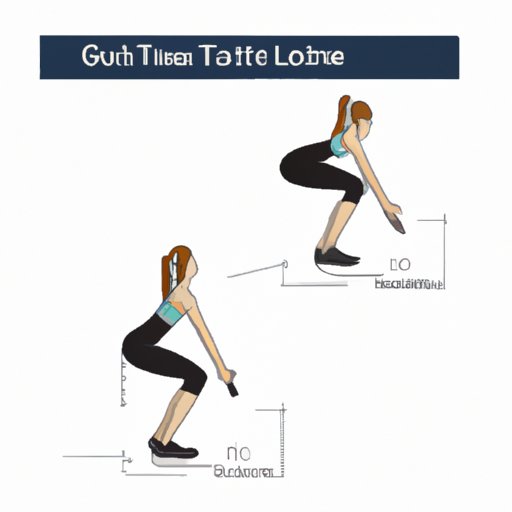
I. Introduction
Do you often find yourself sitting for long periods of time, only to stand up and feel tension in your glutes? Have you ever experienced a pain in your lower back? One of the most common problems amongst individuals who do a lot of sitting and have desk jobs is the tightness in the glutes. This can be a source of discomfort, especially for those who exercise or perform activities that require flexibility. Stretching your glutes can help you recover and increase flexibility, therefore allowing you to perform physical activities with ease and without pain.
II. The Importance of Stretching Your Glutes: A Beginner’s Guide
Stretching is important for overall health and fitness because it helps prevent injuries, increases range of motion, and reduces the risk of muscle soreness. The glutes are the three muscles that make up the buttocks and are essential for hip movement. It is important to stretch your glutes as they can become tight from prolonged sitting or exercise, leading to aches, pains, and poor posture. Consistent stretching can result in improved flexibility and posture, reducing pain in the hips, lower back, and knees.
III. 5 Simple Glute Stretches to Incorporate Into Your Workout Routine
Glute stretches can be incorporated into your workout routine easily, without the need for any equipment. Here are five beginner-friendly glute stretches:
- Butterfly glute stretch
- Hip flexor lunge
- Seated figure four stretch
- Pigeon pose
- Standing forward bend
When performing these stretches, it is important to maintain proper form and breathing technique, which can enhance the effectiveness of the stretch. You can modify each stretch to suit your level of mobility or injury.
IV. How to Increase Flexibility in Your Glutes with These Easy Stretches
Progressive overload is a technique used to increase flexibility and reduce discomfort. To utilize this technique when stretching, you can increase the duration or intensity of each stretch over time. Here are five intermediate-level glute stretches that target deeper muscles:
- Frog pose
- Half pigeon pose
- Supine figure four stretch
- Low lunge with a twist
- Reclining hand-to-big-toe pose
It is important to take it slow and gradually increase intensity and duration of stretching to avoid injury.
V. Yoga Poses for Tight Glutes: A Comprehensive Guide
Yoga can be a great way to increase flexibility and balance, as well as reduce stress. Here are five yoga poses that target the glutes and hips:
- Warrior 1
- Chair pose
- Pyramid pose
- Puppy pose
- Extended triangle pose
These poses help strengthen and stretch the glutes, hips, and hamstrings, improving mobility and reducing pain. Practicing yoga can also have mental benefits, such as promoting relaxation and reducing anxiety and depression.
VI. The Benefits of Foam Rolling Your Glutes and How to Do It Safely
Foam rolling can be an effective way to complement stretching, as it can help improve blood flow and reduce muscle soreness. Here’s how you can do it safely:
- Find a foam roller.
- Position your body on the foam roller.
- Roll back and forth to target the glutes.
It is important to focus on your breathing while keeping your movements slow and controlled. If you experience discomfort, slow down or stop rolling immediately.
VII. A Step-by-Step Guide to Stretching Your Glutes After a Tough Workout
Post-workout stretching is important for recovery, injury prevention, and reducing soreness. Here’s a five-step routine for stretching your glutes after a challenging workout:
- Dynamic warm-up
- Targeted glute stretches
- Cool-down jog or walk
- Cool-down stretches
- Refuel with protein and hydration
Stretching your glutes after a challenging workout can help reduce soreness and aid recovery.
VIII. Conclusion
Stretching your glutes can help improve your overall health and fitness by increasing range of motion, reducing pain, and preventing injury. The beginner-friendly and intermediate-level stretches outlined in this article can easily be incorporated into your daily routine, and if practiced consistently, can lead to noticeable improvements in flexibility and joint mobility. Remember to consult with a physician before attempting these stretches if you have a history of injuries or joint pain. For more information on glute stretching and fitness, consult with a qualified professional or refer to reputable online sources.




